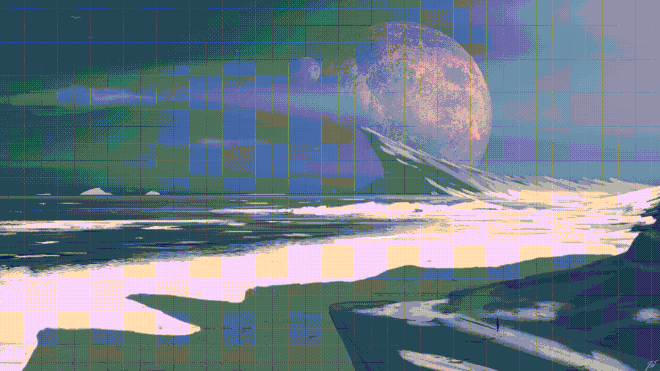Srimad Bhagavatam Cosmology(SBC) Under a Possible Scientific Scrutiny
Table of Contents

In this article, I propose a series of steps that can help us prove the existence of certain elements mentioned in Srimad Bhagavatam Cosmology(SBC) from a Scientific Perspective. SBC is a vast model with a lot of features that sound like a Fantasy novel at the first glance. However, the Eastern Traditions hold that this model is the reality present in the cosmos. As a physicist, I cannot accept or deny this claim directly without evidence. So, I have come up with a series of steps that can be pursued to test a particular hypothesis of the SBC model: specifically, the planets with different oceans, let us take the milk/honey/liquor ocean as an example.
When it comes to astronomy and cosmology, all we have are two things, Gravitational Effects(like waves, lensing, etc) and Electromagnetic Effects(waves, redshift etc) that provide us with observation. To detect a particular molecule that is present in abundance necessitates a unique signature of the said molecule that can be imprinted either Gravitationally or Electromagnetically. Using Gravitation is a big no as the effects are very minimal and the noise is high. Using Electromagnetism, we have a special tool called Spectroscopy. This method will help us identify if a particular molecule exists in a said location by analysing the emitted light from the source. Each molecule will have a significant peak resonance in the EM wave that it emits(and the frequencies it doesn’t emit) which is the unique fingerprint in detecting the molecule’s presence in the given source.
Step 1 #
is to construct a theoretical model of a planet’s emission of light whose major component is water which then can be replaced by milk, honey and liquor. Study the emission waves by simulating and verifying them with that of Earth’s using the satellites orbiting around Earth and that has travelled beyond. Once the model is verified, produce the simulation results of the planets with oceans containing milk, honey, and liquor.
Step 2 #
would be to check the boiling and melting points for the said liquids and find the range of the Goldilocks zone, the radius of the planet’s orbit from its star such that the radiation from the star is sufficient to let the atmosphere of the planet suitable for the above-mentioned components stay liquid phase.
Step 3 #
is to filter out all the planets from the official star-planet database that doesn’t fall under our pro-goldilocks zone(Goldilocks zone for the special liquids we are analysing) and count the number of planets that needs to be observed.
Step 4 #
is to observe the planet using telescopes either on Earth’s surface or orbiting the Earth based on the spectral frequencies we wish to observe and accounting for the red-shift due to the planet’s distance from our Earth. These factors will determine if we are going to deal with radio astronomy or infrared or near-infrared or UV or visible light. This is the longest process phase where multiple readings from multiple different sources have to be combined and cross-checked to prevent errors due to instrument or noise.
Step 5 #
is to match the observations with our theoretically simulated data to confirm the presence of the milk, honey or liquor ocean on the said planets. If we could match and confirm the data, we have officially shown worlds containing milk/honey/liquor oceans. If we couldn’t, well, there are always more planets we haven’t observed and keep the hunt going. Discovering worlds is not as simple as discovering stars, since planets don’t radiate light out of them and the star in the planet’s system must be bright enough for the planet to radiate a reflection back at earth and a lot of other factors that go into it.
This is not only a win for SBC but for scientists in general since evolutionists will need to worry about how a planet could be formed with an ocean composed of milk, an organic solvent, that is more complicated than H2O(the same is true for honey and liquor). This discovery, if discovered, will bring a lot of changes in the paradigms we are so used to, and a new shift in thinking would crop out of it. We know salt in the ocean is the ingredient that preserves water from being spoilt, and the water cycle replenishes the fresh water on the earth’s surface. If planets having oceans filled with milk, honey and liquor exist, what would a milk cycle look like, or liquor or honey for that matter? How will those be preserved from spoilage, since they are more sensitive than water? A hundred other questions will crop up and a lot of research avenues will open up if this discovery is made possible. Let us hope that we have people who might be interested to put in their work in this direction.
